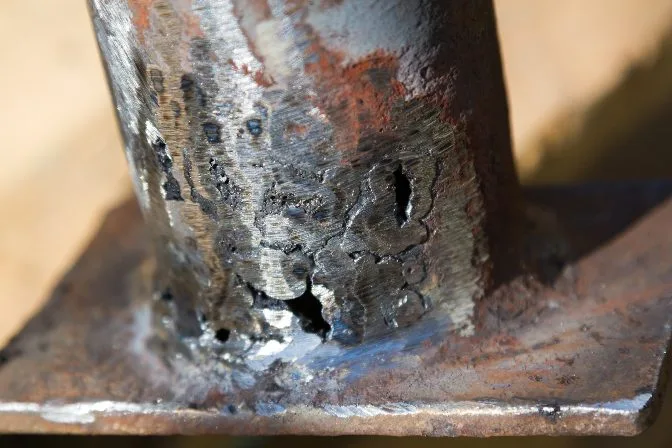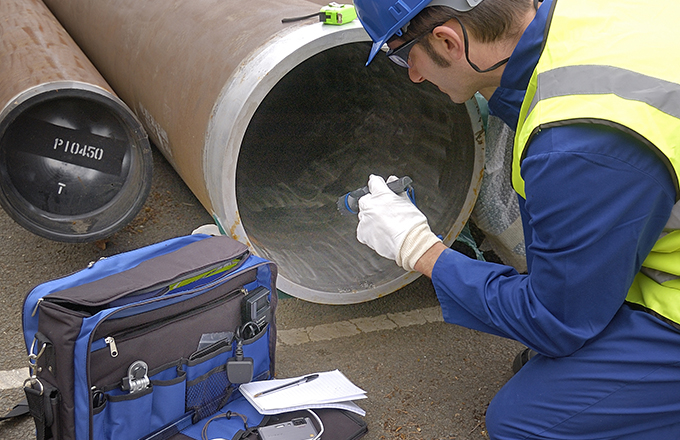Top Benefits of Reputable Welding Inspection Milwaukee in Building And Construction
Top Benefits of Reputable Welding Inspection Milwaukee in Building And Construction
Blog Article
Understanding the Value of Welding Examination in Ensuring Structural Integrity
Welding examination plays a pivotal function in keeping structural stability within the building and construction sector, serving as an important safeguard against prospective failings. By methodically identifying typical flaws-- such as porosity and insufficient fusion-- evaluations not just promote top quality standards but likewise make sure conformity with safety and security regulations. The implications of ignoring this necessary procedure expand past immediate safety issues, impacting both the durability of structures and the general track record of companies. As we discover the numerous examination strategies and their advantages, the inquiry develops: what are truth prices of ignoring this crucial facet of building and construction?
Role of Welding in Building And Construction

Along with architectural applications, welding is indispensable in the fabrication of both large-scale and elaborate parts. It permits the customization of parts, enabling designers and engineers to bring their styles to fulfillment. The adaptability of welding strategies, consisting of MIG, TIG, and arc welding, permits for the reliable signing up with of various products and densities, catering to certain job demands.
Additionally, the improvement of welding innovations has resulted in enhanced efficiency and precision in construction procedures. Automated welding systems boost performance while minimizing human mistake, thus promoting better results. As a result, the role of welding in construction expands past simple assembly; it is a crucial consider making certain the safety and security, durability, and overall integrity of frameworks, underscoring its significance in the modern-day building landscape.
Common Welding Flaws
The honesty of welded structures is dramatically influenced by the visibility of defects that can jeopardize their efficiency and safety. Typical welding issues include porosity, insufficient blend, undercutting, and slag additions, each of which can drastically affect the general toughness and resilience of bonded joints.
Porosity happens when gas bubbles are entraped in the weld steel, leading to lowered tensile stamina. Insufficient blend emerges when the weld steel does not effectively bond with the base steel, resulting in weak joints vulnerable to failing.
Various other flaws, such as extreme spatter and imbalance, can likewise contribute to structural weaknesses. Identifying and addressing these defects throughout the welding procedure is critical to make certain the integrity of the last structure. Awareness of these common welding issues is crucial for examiners and engineers to keep the honesty of welded structures and ensure lasting security and efficiency.
Benefits of Welding Inspection
Making certain the honesty of welded structures counts heavily on the effectiveness of welding examination processes. The primary advantage of welding evaluation is the early discovery of prospective defects, which can dramatically minimize the risk of tragic failures. By recognizing problems such as cracks, insufficient fusion, or porosity prior to they escalate, examination processes aid preserve the safety and dependability of structures.
Additionally, welding inspection boosts compliance with market standards find more and guidelines. Abiding by these demands is crucial for preventing lawful consequences and making certain that tasks meet essential safety procedures. This conformity also fosters a society of quality control, advertising best methods amongst welding employees.
Additionally, routine examination can lead to cost financial savings with time. By mitigating the probability of rework or fixings due to welding problems, companies can allot sources more effectively, eventually improving performance.

Examination Methods and Standards
Efficient examination techniques and requirements are essential elements of keeping the integrity of welded structures. Typical examination techniques include aesthetic examination, ultrasonic screening, radiographic testing, and magnetic particle testing.
Aesthetic examination is often the very first action, permitting assessors to identify surface problems such as fractures or incorrect grain forms. Ultrasonic screening uses high-frequency audio waves to detect internal defects, while radiographic testing uses X-rays or gamma rays to expose concealed incongruities within the weld. Magnetic fragment screening is reliable for detecting surface and near-surface defects in ferromagnetic materials.
Criteria play an important function in assisting these assessment procedures, with organizations such as the American Welding Society (AWS) and the International click here now Organization for Standardization (ISO) providing comprehensive guidelines. Conformity with these criteria not just makes sure the high quality of welds however also fosters trust amongst stakeholders in the architectural stability of the finished product. Complying with well established assessment methods and standards is basic to attaining reputable and lasting bonded frameworks.
Regulatory Compliance and Safety And Security
Governing compliance is vital for guarding the security and integrity of bonded structures. Sticking to well established codes and standards, such as those established by the American Welding Society (AWS) and the American National Standards Institute (ANSI), makes certain that welding methods meet rigid safety and top quality demands. These regulations are created to avoid failings that could bring about devastating cases, injuries, or loss of life.
Conformity with these policies entails regular examinations and assessments throughout the welding procedure. Certified examiners evaluate welds for adherence, toughness, and quality to specs, making certain that any variances are without delay dealt with. This positive strategy not only improves the architectural honesty of welded components however additionally mitigates risks related to non-compliance.
In addition, governing bodies frequently need documents of examinations and compliance records, which act as legal proof of adherence to security requirements. Firms that focus on governing conformity not just protect their workforce and clients but also improve their track record within the market. Eventually, understanding and carrying out these laws is crucial for any organization intending to keep high safety and security criteria and attain lasting functional success in welding techniques.
Verdict
In conclusion, welding examination plays a crucial role in keeping structural honesty within the building sector. Eventually, a dedication to extensive welding inspection is necessary for safeguarding both the labor force and the integrity of built structures.
The adaptability of welding techniques, including MIG, TIG, and arc welding, permits for the effective signing up with of different materials and densities, catering to particular task requirements.
Making sure the integrity of welded frameworks relies heavily on the performance of welding inspection processes (Welding Inspection Milwaukee). In recap, the advantages of welding evaluation are diverse, crucial for guaranteeing architectural integrity and operational quality

Adhering to well established codes and criteria, such as those established by the American Welding Culture (AWS) and the American National Standards Institute (ANSI), guarantees that welding methods satisfy rigorous safety and security and top quality requirements. Ultimately, a commitment to rigorous welding evaluation is vital for securing both the labor force and the stability of built frameworks.
Report this page